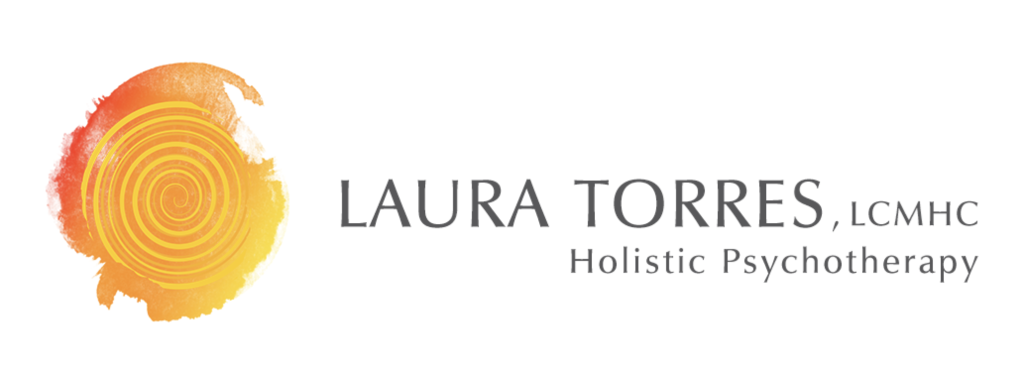Recently a good friend and colleague of mine and I decided to work through the Artist’s Way together. I’ve adapted my morning pages ritual a bit due to the challenge of sitting down and writing in the morning with a toddler so I’m doing evening pages. On my first night, I was excited to get my journal and sit down to write and looked around the house and couldn’t find anywhere. My husband was watching TV in the living room, Connor was sleeping, and then really all that’s left is the bedroom and the kitchen, which neither of those felt like a cozy space to write. I noticed my story coming together around wishing we had a bigger house and that maybe I wasn’t going to be able to do the artist’s way because I didn’t have a writing space…you see how this goes. I felt irritated and disappointed. Finally, I decided to go outside on the back porch since obviously there was no suitable space inside. I sat for several minutes before opening my journal and just took in the early evening experience–the crickets chirping, the sky was a blend of soft pinks and blues, the moon was peeking out from behind the trees, I could hear the crackling of a fire next door and smell the nostalgic campfire aroma. After I sat for a few minutes my entire narrative had shifted to something like this–what a blessing that my husband chose to watch TV and my house was so small so that I was nudged to go sit outside when otherwise I would have missed this perfect writing spot. I no longer felt irritable or disappointed but instead, I felt gratitude.
What feels poignant to me about this is that my narrative spontaneously shifted when I took a few moments to take in the positive experiences around me. This was a bottom up experience, my feeling state shifted and the thoughts and story spontaneously followed. Perhaps I could have also taken a more traditional, top down approach where I might have noticed my story and thoughts and then consciously chosen a different one that helped to shift my feeling state. Since we’ve already talked some about taking in the good, in this post I’d like to focus on shifting our story to one that’s positive or restorative.
I first heard the phrase ‘restorative narrative’ in an interview with Lissa Rankin on Sounds True: Insights at the Edge. Lissa talked about choosing to believe in a narrative that gives her comfort. When Tami [fusion_builder_container hundred_percent=”yes” overflow=”visible”][fusion_builder_row][fusion_builder_column type=”1_1″ background_position=”left top” background_color=”” border_size=”” border_color=”” border_style=”solid” spacing=”yes” background_image=”” background_repeat=”no-repeat” padding=”” margin_top=”0px” margin_bottom=”0px” class=”” id=”” animation_type=”” animation_speed=”0.3″ animation_direction=”left” hide_on_mobile=”no” center_content=”no” min_height=”none”][the interviewer] asked ‘what do you say to folks who say that you’re just making up a story that makes you feel better?’ Lissa responded ‘Maybe I am making it up…I don’t know, but I know that when I believe that I’m all alone…in a hostile or neutral universe and uncertainty is unsafe, then I’m really afraid…and when I believe that I’m interconnected, in this inter-being-ness with the life force itself, in a benevolent universe where uncertainty is the gateway to possibility…then I feel a lot more brave and a lot more stillness inside…so I don’t see the harm in restorative narratives that allow us to do courageous and often uncomfortable things.’ What if we could choose the story that best serves us and helps us to feel empowered, comforted, and aligned?
Here’s another great example of a restorative narrative: some of you may remember me sharing about the server that I met in the Dallas Fort-Worth airport several weeks ago. As you may remember, he had a lot of powerful pieces of wisdom to share and one of them was his story about his calling. He explained that he was not only a server in a Mexican restaurant in the DFW airport–he was also a speaker. And not only was he a speaker, but he didn’t have to travel around like other speakers, people from all over came to him. You could tell that he felt deep gratitude for the opportunity to impact so many people who were coming and going from all over the world. He exuded love, contentment, and a sense of alignment with his calling. This is the power of a restorative narrative.
In her book Steering by Starlight, Martha Beck shares a great exercise to help us turn ‘negative experiences’ into restorative narratives and it goes something like this:
- Think of 3 of the best things in your life
- Think of a happy event that contributed to having your favorite thing (choose one of the above or you can do this for each)
- Now think of a prior happy event that contributed to the event above
- Lastly, think of a supposedly ‘bad’ event that eventually supported your favorite thing
- Now tell the story as follows: I was destined to have (fill in answer to question #1). Because of this destiny, something negative happened (fill in answer to question #4). Fortunately, this led to (fill in answer to question #2). And that helped this other thing to happen (fill in answer to question #3). And that is how destiny brought me (fill in answer to question #1).
So there are a couple of things I want to clarify. I’m not suggesting to push away, dismiss or ignore painful experiences. Feeling the fullness of our life experiences–both the pain and the joy is important, but as Buddhism and other spiritual paths teach, pain does not have to lead to suffering. We are not trying to avoid the pain but to transform it into something restorative rather than something that creates suffering. Often times we think that our pain and our painful story are the same but typically we have a story about the pain, something like ‘this shouldn’t be happening’ or ‘this always happens to me’ or ‘I’ll never feel better’, you get the idea…and it’s the stories about our pain rather than the pain itself that cause suffering. What if we could create a restorative, resourcing narrative around the pain?
I’m also not suggesting to stay in a situation that deep down, you feel is not good for you–and to keep coming up with restorative narratives that allow you to stay in the situation. But if you know that you are not ready to leave a situation, I believe that it’s most helpful to create a restorative narrative about the situation. Restorative narratives should leave you with a sense of feeling comforted, feeling aligned, feeling supported and held, feeling like everything is okay–basically feeling more connected to love or a sense of connection and less connected to fear or a sense of separateness/aloneness. The more we play with creating restorative narratives, the more often we will feel like things are aligned and that we are supported.
Challenge: Consider something challenging that’s happening for you now and take a some time to create a restorative narrative around the experience. Here are some questions you can ask yourself: How is this helping me to grow? What is a totally different way to view this situation? Think of the most positive person or character you know, what would they say about the situation. If you’re still feeling stuck around how to shift the narrative, try spending a few minutes taking in the good to shift your energy and feeling state and then revisit the task of coming up with a restorative narrative. Write it down so you remember or share it with someone.
Affirmation: I create my reality by choosing my story.
[/fusion_builder_column][/fusion_builder_row][/fusion_builder_container]

